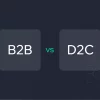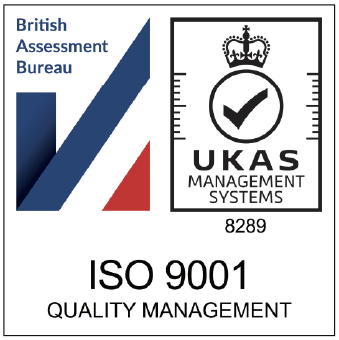What is Demand Forecasting?
None of us can predict the future, but when you are running a growing business it can often feel like you need to have a crystal ball at the ready. When done well, demand forecasting can help you to plan effectively and answer these important questions about your business:
What products you should make?
How many products do I need to make?
When should I make them?
When will I need to ship them?
It may seem like a lot of extra work, but this is how the best in the businesses in ecommerce and retail are doing it. Demand forecasting will give you a much better chance to avoid overproducing your products and stop you incurring extra production costs or under-producing and missing out on sales at peak times.
Demand forecasting is not an exact science, but it will help you to focus on what your business needs and when you may need it.
A Goal Without a Plan is Just a Wish
Accurate demand forecasting helps you to see when your products are most likely to be in peak demand and help you to plan effectively to drive sales, reduce costs and optimise inventory.
Without a forecast, your business will just be flying blind from month to month with no overall plan in place.
What Is the Difference Between Sales Forecasting and Demand Forecasting?
Sales forecasting and demand forecasting are not the same things. They are similar in many ways; but with some key differences, you need to be aware of.
Put simply:
Sales Forecasting is how many products you can sell
Demand Forecasting is how many people will want your product.
Here’s an example: You might have a new product that you know you can sell if only more people knew about it.
So, you build a killer online store, optimise it for conversions and launch with a marketing plan to increase brand awarness and sell some product along the way. Your marketing team did such a great job with the product launch that you created lots of demand for your product, (The dream scenario) but then you can’t fulfil all of the new orders because you have found yourself with limited resources plus supply chain and logistics problems.
You can’t sell customers something you don’t have. Having products constantly listed as ‘out of stock’ means your customers will begin to look elsewhere. Doing your demand forecasting before the launch based on market data would have helped to reduce the shortage of stock.
The Importance of Demand Forecasting in Business
Having a good grasp of the demand for your products is vital to the future growth of your business. Demand forecasting will never be 100% accurate but it can really help to guide your decision making at both a tactical and strategic level.
Why You Need Demand Forecasting
Without demand, you don’t have a business. To continually drive growth in your business you need to have a better understanding of where you’re heading to. Demand forecasting is a huge step towards gaining valuable marketplace insights, opportunities for sales, where your revenue is generated and when you are most likely to need to order inventory.
Forecasting will also help you to develop your marketing plans, budgets and your cash flow. Turning you from a reactive business to a proactive business that can make more informed decisions.
Examples of Demand Forecasting
Demand Forecasting Methods
Each business is unique in its own way. The needs of a start-up with a low number of SKU’s will differ to that of an established retailer, selling across multiple channels with lots of product variations. There are different methods of forecasting that support your business objectives.
Economy Based Forecasting
Macro-level forecasting: Deals with the general economic environment factors, national income and general level of employment.
Industry-level forecasting: The demand for your categories products as a whole. For example, the demand levels for toys in the UK or demand for clothes in Germany.
Firm-level forecasting: Means forecasting the demand for a particular firm’s product. For example, demand for ACME toys.
Time Based Forecasting
If you prefer forecasting based on the time, you can choose between short-term and long-term.
Short-term forecasting: Covers a short period of time, depending upon the nature of the industry. Usually, this is done over six months or less than one year. Short-term forecasting can really help with tactical decision-making.
Long-term forecasting: for a longer period of time say, two to five years or more. It gives you the information you need for big strategic decisions for your business. For example, outsourcing your order fulfilment to a third party.
What Are the Best Practices for Demand Forecasting?
Getting the right data matters.
A best-in-class forecast should help you to answer this question:
‘How many products would sell if you never ran out of stock on any channel?’
To calculate this number, you will need to understand your:
Sell through rate (the amount of inventory you are selling over a specified timeframe)
Out-of-stocks (which products were unavailable for purchase.)
This will help you to understand the ‘true demand’ for your products.
Compared to predicting the future, preparing the data might seem like the easy part of the process, but it’s much harder than it sounds. Getting the data right from the start, will help you to make more informed decisions that really matter for your business.
Create a Benchmark for Your Business
Your forecast should be based around your ‘normal’ sales patterns, not your one-off spikes in traffic.
This should take into account your seasonal sales patterns on a daily, monthly, weekly and quarterly basis but it shouldn’t include any one-off sales promotions or that time an influencer mentioned you on their Insta feed and sales went crazy.
If your business is fortunate enough to have lots of historical data to use, then use it. This will give you lots of useful insights around sales patterns. For new products, you will need to look at similar products and brands to get an understanding of their seasonality and popularity.
Conclusion
Never stop improving.
The best demand forecasts are not set in stone. As your business evolves, you’ll need to adjust the forecast to reflect these changes you are going through, whether they come internally or externally. The demand forecasting creates a better understanding of the impact of that these types of events can have on your business.
PS, want to know more about demand forecasting and how it can help your business to grow? Contact 3PL today for a chat about how outsourcing your order fulfilment could benefit you.
More from the 3PL blog…
What is a Third Party Logistics Provider | Which eCommerce Order Fulfilment Strategy is Best For Your Business? | Amazon FBA: The Advantages & Disadvantages
Speak to 3PL about your order fulfiment
It’s time to supercharge your business and overtake your competitors. Speak to 3PL today and find out how we can take your ecommerce and B2B fulfilment to the next level.


